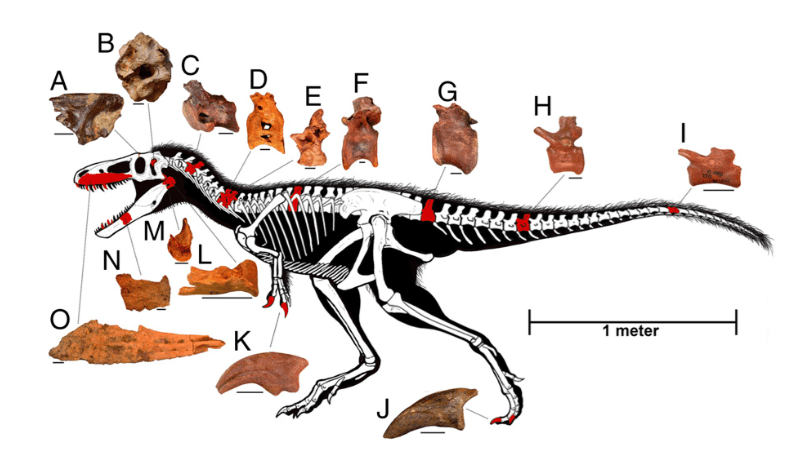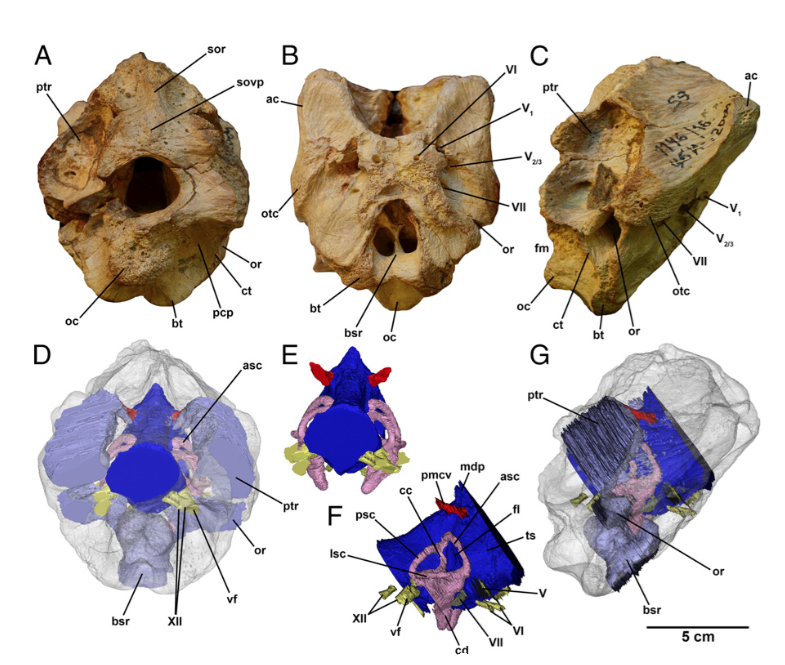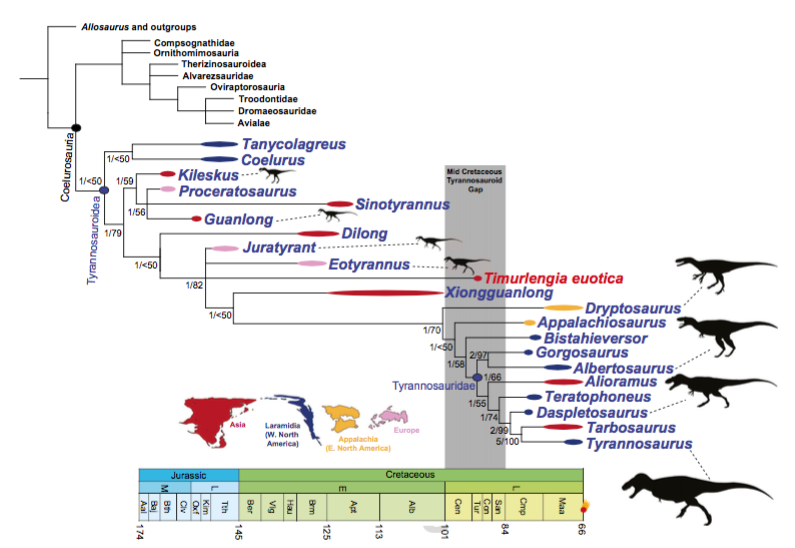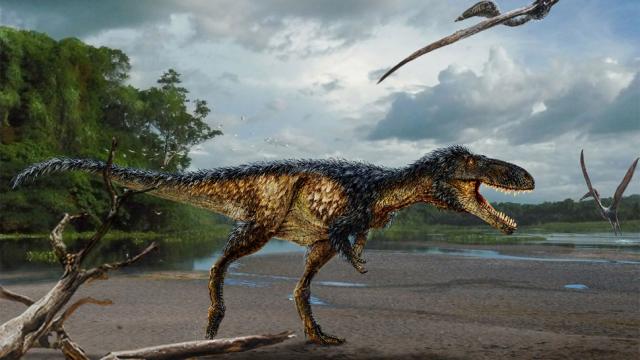Say hello to Timurlengia euotica, a horse-sized dinosaur that lived roughly 90 million years ago. Discovered in Uzbekistan, this newly described species was a distant relative of Tyrannosaurus rex, and it’s helping scientists explain how relatively small carnivores evolved into the gigantic predators that dominated the Late Cretaceous.
There’s a surprising and inexplicable absence of fossils stretching across a 20 million year period during the Mid Cretaceous period. Consequently, paleontologists have struggled to understand how deer-sized carnivores evolved from marginal “second tier” hunters into ferocious apex predators such as T. rex, Tarbosaurus and Albertosaurus. At the apex of their dominance, these monsters measured up to 12m in length and weighed upwards of five to seven tonnes. They were the largest carnivores to ever live on land, only to be wiped out in the mass extinction of the Late Cretaceous.
Paleontologists have extensive fossil evidence of smaller and more primitive tyrannosaur-like creatures that lived during the Middle Jurassic to the Early Cretaceous. They have also got literally hundreds of samples of Late Cretaceous tyrannosaurids, many of which can now be found towering over museum visitors. But as for that gap in between, there’s practically nothing.

Skeletal reconstruction of T. euotica. Known bones are shown in red. Individual bones come from different individuals. Image: S. L. Brusatte et al., 2016/PNAS
According to a new study published in the Proceedings of the National Academy of Sciences, the discovery of Timurlengia euotica — a mid-sized dinosaur found in the Bissekty Formation in Uzbekistan — finally resolves this frustrating gap in the fossil record. The bits of scattered bone and a remarkably well-preserved braincase is offering an unprecedented glimpse into what these middling predators looked like in the immediate period before they evolved into their much larger form.
Little is known about how tyrannosaurids developed not just their gigantic sizes, but also their highly unusual brains and ears capable of tuning in to low-frequency sounds. As physically impressive as these creatures were, they also exhibited very sophisticated senses.

The braincase of T. euotica. Image: S. L. Brusatte et al., 2016/PNAS
Remarkably, investigation of the braincase of a single T. eutotica fossil shows that some of these characteristics were already in place, including a highly developed brain and specific inner ear features. The creature did not exhibit the extreme tonnage of its successors, weighing in at an estimated 170-270kg.
The researchers, led by Stephen Brusatte and pals, aren’t entirely sure what the “trigger” was for the subsequent growth spurt in tyrannosauroids, but they have got an interesting theory. It would seem that the brains and keen senses of these proto-tyrannasaurs may have set them up to become successful apex predators when the opportunity finally arose (that is, the right environmental and ecological conditions). The researchers call this the “head-first” model of tyrannosauroid evolution, in which characteristic features of their oversized and sturdy skulls came into existence before the rapid increases in body size.

An updated map of theropod evolution. Image: S. L. Brusatte et al., 2016/PNAS
This evidence, as interesting as it is, comes from a single specimen, so the researchers say we need to be careful about making too many inferences. As the authors conclude in their study, which now appears in PNAS, “Timurlengia remains a single data point from a still murky interval in dinosaur history, and future discoveries from this gap will undoubtedly lead to a better understanding of how tyrannosauroids rose from marginal creatures into some of the largest terrestrial predators in Earth history.”
